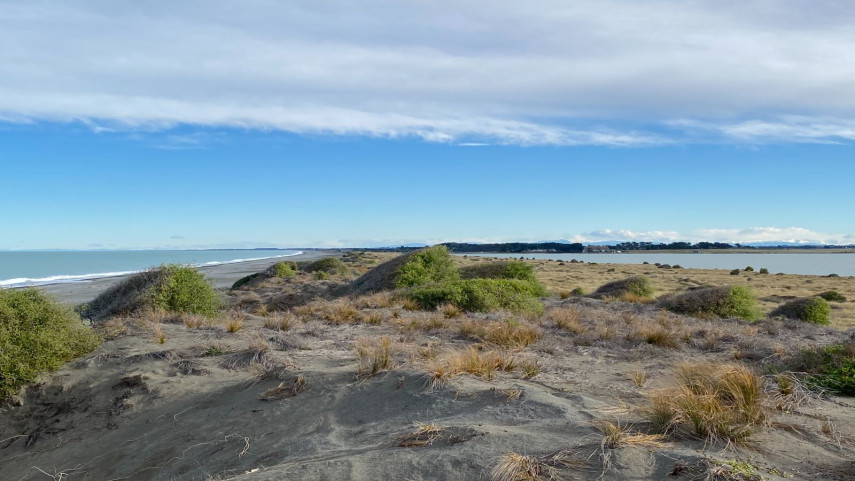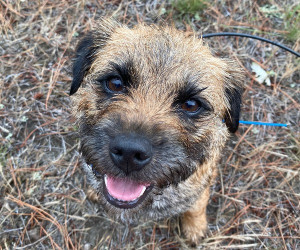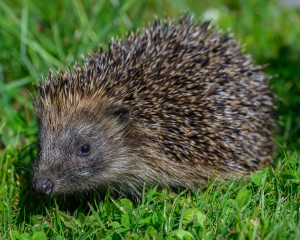
Pest Free Banks Peninsula breaking new ground on hedgehogs

Share this story
Part of the windswept Kaitōrete has been cleared of hedgehogs to protect vulnerable wildlife, in a proof of concept that’s thought to be a national first.
Pest Free Banks Peninsula (PFBP) is one of the country’s larger community-led, agency and iwi supported projects aiming to rid pest species off the Peninsula.
PFBP has provided a proof of concept that hedgehogs can be removed from Kaitōrete, one of two project elimination sites for the programme. It is believed this is the first time a proof of concept has been achieved on mainland New Zealand and outside of a fenced sanctuary.
A three-step detection method was used to determine the area was free of hedgehogs. This included an array of leghold traps and trail cameras, followed by a number of sessions with the programme’s hedgehog conservation dog, Nightshade.

Nightshade
Nightshade consistently picks up hedgehogs in front of the programme’s trapping network, but zero detections behind it
“Nightshade showed no sign of hedgehogs within the containment zone of 45ha on any of the passes through the site. With nothing in the leghold lines either or showing up on cameras, we are confident there are no remaining hedgehogs in this area,” PFBP Dog Handler Karin Bos says.
“Dogs’ sense of smell is so sensitive that the possibility of the highly trained dog missing a hedgehog on multiple passes are remote," PFBP Senior Team Lead Tim Sjoberg says.
They have achieved this milestone through an intensive trap network, using a mixture of live capture traps and kill traps, to target a range of pest species under the elimination strategy.
Other species targeted on Kaitōrete include mustelids (weasels, stoats and ferrets), possums and feral cats. With the network beginning at the western end, they have progressively moved the traps eastward, as an area is cleared. The backdoor from the west has been closed with a network of traps and an active fence system.
“We’re using a mixture of traditional methods and new technology at this site,” Mr Sjoberg says.
“We will adapt our processes as we progress, and as new methods and products come to market.” With the information learned from this elimination work, PFBP hopes to also see the other pest species responding in the same way as hedgehogs. “We have more conservation dogs due on the ground soon, to help with our detection mahi.”
With PFBP’s partners the Department of Conservation, Christchurch City Council and Environment Canterbury all contributing to research and control on Kaitōrete, and support from Papatipu Rūnanga, community groups and landowners, this is a programme that has serious backers in the pest free movement.

Hedgehog
In Christchurch City Council’s Regional Parks Biodiversity Team Leader Alison Evans’ experience, hedgehogs are often overlooked as pests.
“They have detrimental impacts on native biodiversity in Aotearoa. They are indiscriminate predators and are responsible for population declines of many native species including lizards and invertebrates. They are also a problem for ground dwelling and nesting birds, like the pohowera/banded dotterel, by eating the eggs and young chicks,” she says.
Environment Canterbury’s Regional Leader Biodiversity Shaun Burkett agrees.
“Kaitōrete is an important habitat for many species of indigenous biodiversity and is such a unique environment. It’s encouraging to see that the PFBP adaptive approach is working.”
DOC Mahaanui Operations Manager Andy Thompson says it is exciting to see the work progressing to protect the area’s unique flora and fauna. A highlight was the way stakeholders were working together on the project.
It has been a challenge for this programme, and others across New Zealand to see hedgehogs in a light other than their cute portrayal in overseas literature.
“It’s a challenge for sure, however, in our country where they have no natural predators, their populations are left uncontrolled, and they eat our native species at an alarming rate and can out compete them for food. It’s a different kind of story here," Mr Sjoberg says.
Kaitōrete is a unique and remarkable dryland ecosystem of international significance, home to a range of endangered plants, lizards, insects, and birds, including the katipō spider, shrubby tororaro, and pīngao.
The area has great cultural significance to Ngāi Tahu and Te Wairewa and Te Taumutu rūnanga. It’s shaped like a narrow wedge set in between Te Waihora and the ocean, which makes it the ideal place to attempt to eradicate pests without a predator-proof fence as the narrow entry points can be defended from reinvasion.
Photos: Pest Free Banks Peninsula and Simon Gooding
